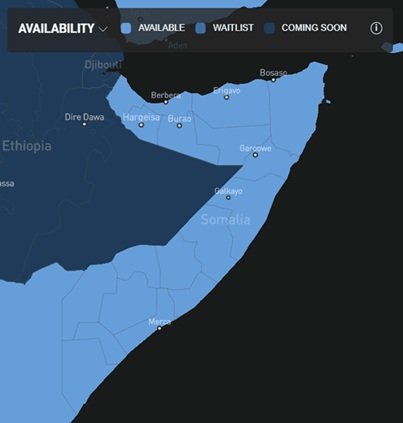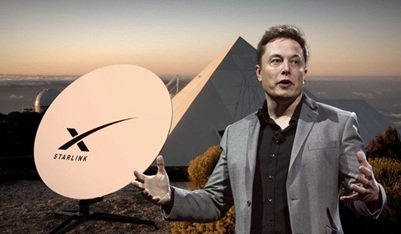By Blessed Frank, Technext
Elon Musk’s SpaceX has officially launched Starlink in Somalia. The high-speed, low-latency internet service is now available across the country, marking a significant step toward enhancing internet access in one of Africa’s least connected nations, particularly in remote and underserved regions.
This comes barely four months after the company was granted a 10-year licence in April by Somalia’s National Communications Authority (NCA) to operate across the country. Technology Minister Mohamed Adam Moalim Ali praised the initiative, describing it as a step toward affordable internet for all Somalis.
Why Somalia needs Starlink
Somalia has struggled with internet access for years, with only about 30% of the population having internet access. Infrastructure damage from decades of conflict has limited traditional broadband. Rural and nomadic communities remain cut off from the digital world.
Starlink changes this narrative with its constellation of low Earth orbit (LEO) satellites. These satellites orbit at about 550 kilometres above Earth. This proximity reduces latency to 25-60 milliseconds. It’s a stark contrast to traditional geostationary satellites, which operate at 35,786 kilometres and offer higher latency.
The service aims to provide reliable internet to remote areas. It uses satellite technology to bypass damaged terrestrial networks. This could revolutionise education, healthcare, and business in Somalia.

Starlink’s network consists of over 7,600 satellites, as of mid-2025. SpaceX plans to expand this to 12,000 or more. Each satellite features advanced Ku-band and Ka-band antennas, delivering speeds up to 220 Mbps in optimal conditions.
The system also includes optical intersatellite links. These space lasers enable global data transfer at 200 Gbps. This mesh network ensures connectivity even in isolated regions. Users need only a Starlink dish and app to get started.
Starlink currently operates in over 140 countries, with 24 of those in Africa. This final rollout in Somalia follows years of negotiations, dating back as early as May 2023, when Somali officials met with the company’s representatives to discuss operational approval. This launch is a big win for connectivity in Africa.
For many Somalis, the economic potential is huge. Small businesses can now reach global markets. Farmers can use IoT devices to monitor crops. This aligns with Somalia’s camel milk revolution, where the internet could streamline production.
Socially, education will benefit. Students in remote areas can access online learning. Healthcare providers can use telemedicine. These advancements could reduce poverty and improve the quality of life.
The optimism is palpable, with a Somali government official remarking, “We hope Starlink will increase the quality of the existing internet in Somalia and make the internet service reach more remote areas.”
To access the service in Somalia, residents can check availability on Starlink’s website. The process is simple. Order a dish for around $349. The monthly plan costs approximately $120. Setup requires a clear view of the sky. The Starlink app guides users through installation.
Starlink’s launch is just the beginning as the company has plans for upgrades in 2026. New satellites will offer speeds exceeding 1,000 Gbps. This could transform Somalia into a digital hub.
The government supports this vision. Minister Mohamed Adan Moalin called it a milestone. He aims to connect all Somalis, regardless of location. Partnerships with local telecoms may accelerate this goal.
Starlink’s arrival in Somalia is a game-changer. It brings high-speed internet to a nation in need. The service promises economic growth and social progress.
Source: Technext


Leave a Reply